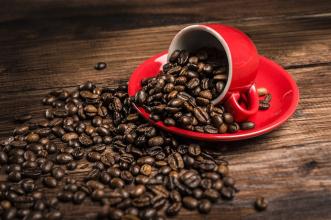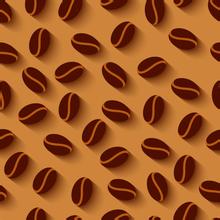Description of Flavor of Coffee beans treated with Solar Water and Honey introduction of Grinding scale in production area
Description of Flavor of Coffee beans treated with Solar Water and Honey introduction of Grinding scale in production area
This method is extremely common in Brazil. The natural washing method is very similar to the water washing method, except that the natural washing method uses a high-pressure washing machine to remove the mucous membrane of the coffee surface, thus skipping the fermentation process. Several raw coffee processing companies in Brazil and Colombia have patented this method and have become local natural water system processing monopolies. The water consumption of this method is much lower than that of water washing, so some people are used to calling it "semi-drying (Semi-Dry)". Because there is no fermentation, coffee beans do not exist (or only have a very low risk of fermentation), and the overall quality of coffee is more constant. But unfortunately, because the coffee is not fermented, the taste will tend to be insipid and the mucous membrane will not be easily removed. It must be kept in the tank for about 18-36 hours to make it mellow and decompose the mucous membrane. There are two methods of fermentation, namely wet hair alcohol and dry hair alcohol, as the name implies, the former adds water, the latter does not add water. In the process of making alcohol, the seeds and internal pulp will produce special changes, which is one of the steps that most affect the flavor of coffee. Farms that use water washing must build washing pools and be able to introduce an endless supply of live water. During the treatment, the mellow beans are put into the pool and passed back and forth, using the friction of the beans and the power of running water to wash the coffee beans until smooth and clean.
Washing method: the peel, pulp and mucous membrane are removed by washing and fermentation. This method is also known as the complete washing method (Fully Washed). Shampoo is the most common way for most coffee-producing countries in the world to handle Arabica coffee beans. Some areas also use advanced high-pressure washing machines to clean the peel, pulp and mucous membrane of coffee beans, so fermentation is no longer needed. This method of using a high-pressure washing machine to treat coffee beans is called "Natural washing (Pulped Natural)", which is the simplest process. The fruit begins the process of sun drying without treatment after picking. This is the oldest method of treatment in existence. This method is still used in places such as Ethiopia and Brazil. Natural solarization is most common in areas where water resources are scarce. The drying process usually lasts about 4 weeks. The method of handling must be very strict to ensure that the coffee does not lose any flavor. The natural sun method requires the local climate to be extremely dry. In some areas, people use dryers to assist in the drying process of coffee fruit (the hot air of the dryer can speed up the drying process and help people control the degree of drying).
Natural sunlight can retain the fruity aroma of coffee fruit. When you taste this kind of coffee, you will find that the coffee has a fruity aroma and a brighter taste. After drying, people will use special machines to remove the shell of the surface layer. This process is called "Dry Milling".

Important Notice :
前街咖啡 FrontStreet Coffee has moved to new addredd:
FrontStreet Coffee Address: 315,Donghua East Road,GuangZhou
Tel:020 38364473
- Prev

Cultural Differences in Coffee Spreading and Development in China
The spread and development of coffee in China; Cultural differences between Chinese and foreign coffee cultures; Comparison of coffee cultures Coffee did not have a long history in China until 1884, when coffee was first planted successfully in Taiwan. On the mainland, the earliest coffee cultivation began in Yunnan. At the beginning of the 20th century, French missionaries brought the first coffee seedlings to Binchuan County in Yunnan Province, and coffee began to be planted on the mainland. From Nature
- Next

Can you cool your coffee with a spoon?-what's the name of the spoon for coffee?
Can you cool your coffee with a spoon mouth? what's the name of the spoon for drinking coffee? finish the coffee while it's hot. If you just talk and let the coffee cool, you will fail the host. Don't finish the coffee in one breath, but taste it slowly. It is polite to drink all the coffee. Because this is a compliment, indicating that the host brews coffee well. If you enjoy it at a friend's house
Related
- What brand of black coffee is the most authentic and delicious? what are the characteristics of the flavor of the authentic Rose Summer Black Coffee?
- Introduction to the principle and characteristics of the correct use of mocha pot A detailed course of mocha pot brewing coffee is described in five steps.
- Which is better, decaf or regular coffee? how is decaf made?
- How much is a bag of four cat coffee?
- How about four Cat Coffee or Nestle Coffee? why is it a cheap scam?
- Which is better, Yunnan four Cats Coffee or Nestle Coffee? How about cat coffee? is it a fake scam? why is it so cheap?
- How about Cat Coffee? what grade is a hoax? which instant coffee tastes better, four Cat Coffee, Nestle Coffee or G7 coffee?
- Process flow chart of coffee making-Starbucks coffee making process what coffee tastes good at Starbucks
- The top ten best coffee beans in the world Rose summer coffee or Tanzanian coffee tastes good
- Yunnan four cat coffee is good to drink?_four cat coffee is a big brand? four cat blue mountain coffee is fake?

